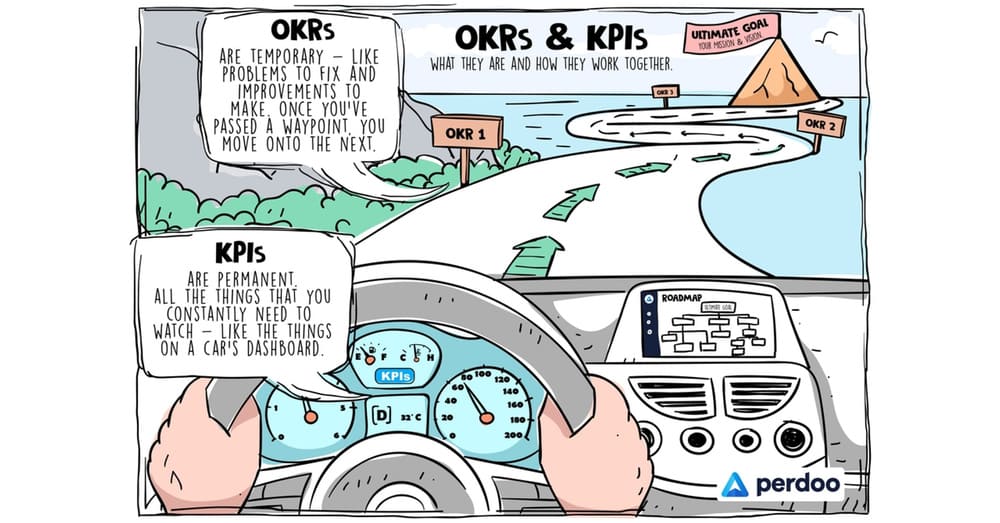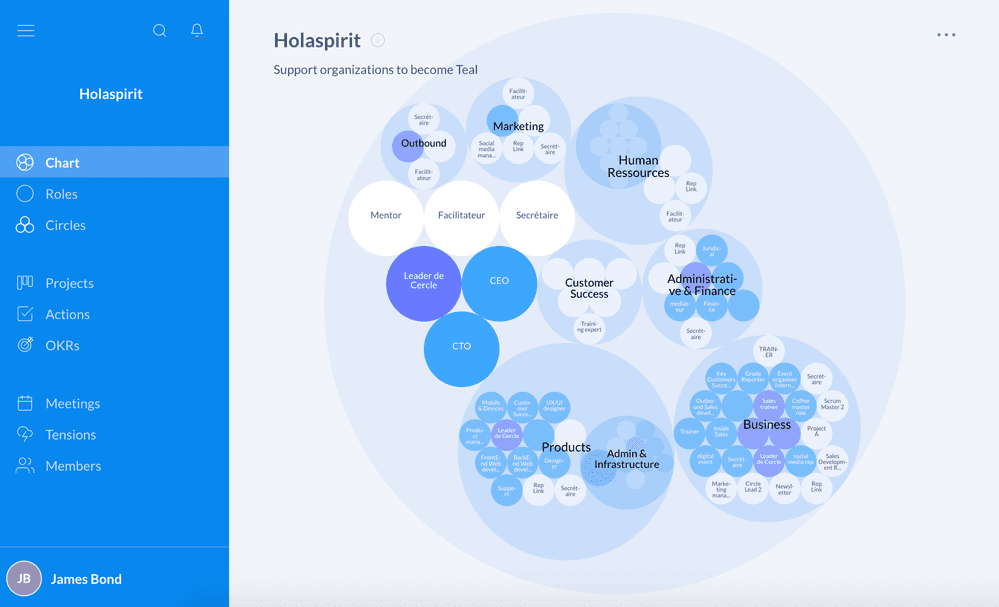All innovative businesses will prioritize group collaboration on projects, particularly for design and company-wide changes. In fact, research from Deloitte shows that 83% of digitally maturing companies use cross-functional teams. And with 69% of companies reporting a higher level of autonomy, it’s an excellent approach for empowering team members.
Through cross-functional team collaboration, you can create compelling innovations that propel your business forward and foster employee satisfaction, engagement, and performance.
However, getting every member of your team to collaborate and communicate effectively can be tricky, especially if all (or many) of you are working remotely. This article will help your business to improve its cross-functional team collaboration efforts.
What is a cross-functional team?
Imagine assembling an expert team of employees from across your business to work collaboratively on a project. This is what’s known as a cross-functional team. Gathered from different departments like marketing, engineering, and design, these teams use their individual expertise in a group setting to present new ideas and innovate.
Typically, cross-functional teams work together on product development, where engineering, design, and marketing professionals collaborate on a new product. Innovation teams also collaborate cross-functionally to create new and innovative ideas and implement them effectively across a business.
To manage a cross-functional team, you’ll need to prioritize clear communication and set goals that everyone can work towards. Each member of your workforce should be able to understand their role within the team and what responsibilities they will take on individually.
The 5 best ways to improve cross-functional team collaboration
If you already have a cross-collaboration team or are considering forming one for your next project, use these five effective strategies to boost its success.
1. Use clear communication channels
As a well-established company, you likely already have some form of communication channel (if not, discover here the 16 best software for team communication). Whatever software you use, you must ensure that it empowers your cross-functional team to communicate effectively.
Adopt both formal and informal communication channels to give your team everything they need to thrive. Hold regular cross-functional meetings, both remote and onsite, and share information on formal channels in between meetings. This will keep your team on track and working towards the same goal.
Informal channels, on the other hand, allow team members to ask and answer queries and give progress updates in a more open way that encourages ongoing communication and strengthens company cohesion

The entire point of a cross-functional team is to work collaboratively towards a common goal. So, clearly communicating your overall vision ensures every member understands their responsibilities and how their work will contribute to the overall project. Giving your employees a shared goal makes it easier to prioritize tasks and make decisions that will propel the project forward.
To ensure all team members understand the shared goal, consider adopting the OKR (objective and key results) methodology. Used by an increasing number of global companies, including Google and Intel, OKR helps your team set ambitious and measurable goals and effectively track them.
According to research from Asana, only 16% of knowledge workers say their company is effective at setting and communicating goals. So it’s crucial that your entire cross-functional team is involved. They need to know what they’re working towards and feel engaged in the process.
OKRs follow a simple template, but keep in mind you can adapt this to your team, project, and purpose:
- I will [objective] as measured by [key result].
Here, the objective is the goal you ultimately want to reach, and should be ambitious and challenging. The key result is a metric you’ll use to measure your progress towards that goal, and should be easy to measure as a number or on a scale.
You can then use these key results to set future goals. For example, if the number is too low or easily achieved, you may choose to set a more challenging goal next time.

Don’t confuse OKRs with KPIs. OKR is more of a framework for goal management that helps you effectively communicate common goals, establish a measurable outcome, and encourage collaboration among cross-functional teams.
3. Empower your employees with well-defined roles
A successful cross-functional team will clearly understand their individual roles within the broader project, and what individual innovations are needed to meet expectations.
Before the project’s start date, meet with every team member. Within this meeting, outline what you expect, the project deadline, and how their expertise can be applied to the cross-functional team. This avoids any potential confusion surrounding roles and responsibilities, and allows employees to take ownership of their tasks.
Also read: 4 steps for managing a project in the most effective way
Holding a pre-project meeting also allows your team members to ask questions, saving you time and stress later down the line.
In order to empower your employees, we also recommend defining roles and responsibilities using a software like Holaspirit, that allows you to clearly see who does what in the organization.

4. Hold regular group meetings
Without regular meetings as a group, your members will struggle to understand the status of the project and how their innovations are being received.
How often you hold these catch-ups will depend on the nature of the project itself and what stage you’re at. If you’re working on a short-term project with a tight schedule, you may find that concise, 20-minute weekly meetings are ideal for updating everyone regularly without interrupting workflow.
On the other hand, if your project is long-term and progress is slow owing to various factors, you may find that one hour-long monthly meeting is sufficient.
Either way, ensure you choose representatives to lead progress updates on different parts of the project. For instance, if your cross-functional team includes a design, sales, and marketing team, choose individuals from each sub-group with a solid grasp of the overall project goals.
Before your meeting, create an agenda highlighting what will be discussed and share them with the entire team. We recommend covering the following topics:
- Progress
- Updates
- Challenges
- Upcoming tasks
5. Provide strong leadership and ongoing support

Your cross-functional team leader must have a background in delegating and managing larger projects, taking them from an idea to completion. Remember you can find effective leaders internally and externally.
You might choose an outsourced manager or consultant with more experience, as they may be better placed to guide the team. But you should consider existing employees who might already possess the necessary skills to be a successful project manager.
If you go down the latter route, hold mini-interviews and ask for evidence of their managerial skills. Have they provided guidance? Or overseen focused discussions within your company? Create a shortlist of internal candidates you think will be able to keep your cross-functional team on track.
Ensure that your project manager regularly provides support to your cross-functional team members and fosters an open and honest work culture.
How can you improve cross-functional team collaboration remotely?
It can be hard to find the best possible talent in a close radius of your office. If you’ve joined the 16% of companies working fully remote, you may consider forming a remote cross-functional team.
Luckily, with the creation of thousands of remote work tools, putting together a highly productive remote team is easier than ever before. Of course, you will face different challenges, which is why you’ll need to look at our tried and tested tips below.
1. Set clear communication expectations
Choose the right communication tools
Every team member should understand how often they are expected to communicate and which channels to use to reach team members quickly. In your pre-project meeting, outline when to use instant messaging and when to schedule video calls, and which collaboration and communication tools should be used.
If you’re looking for an all-in-one platform, Talkspirit may be what you’re looking for! Our software offers several cross-functional team collaboration features, such as chat and videoconferencing, communication channels, project management, online storage, co-editing of documents, publications on a news feed, and much more!

Set your guidelines
Of course, implementing communication tools like Talkspirit is just one part of the process. It’s crucial to set guidelines that ensure these tools are used efficiently.
Consider conducting a short onboarding session for each team member (this can be done as a group session to save time). Make sure everyone has access to the projects they’re part of, and understands the workflow for completing assigned tasks and communicating updates.
Share your expectations from the get-go. For example, you might address the following questions:
- Do you require staff to check in on a daily basis? If so, when and how?
- How often should managers do 1:1 with team members?On which days and hours is it OK to hold meetings? And when is it not? (for example, after 6 pm)
- Should staff only contact each other during specific hours?
- What is the process for communicating an absence or sick leave?
- Who should staff communicate with if the team leader is absent?
It’s also worth clarifying which platforms and tools should be used in specific situations and which should be avoided altogether. For example, Talkspirit should be used for all internal communication, all external communications should be conducted over email, and use of WhatsApp is not permitted.
2. Hold virtual meetings, but don’t overdo it

Don’t keep communication purely in message format. It can lead to confusion, isolation, and less motivation to work towards goals. Instead, hold regular virtual meetings, at least once a week, to discuss updates and challenges.
This not only helps to build rapport but improves employee engagement at work. Automatically schedule meetings and set reminders with automated dialer software to ensure no one misses vital information.
That said, keep in mind that meetings – particularly unnecessary ones that drag on – can significantly hinder productivity. So it’s important to find the right balance. Even if you decide to initially hold weekly meetings, you may find that you no longer have adequate updates to provide the team during these meetings.
So rather than continuing with them for the sake of it, consider moving your meetings fortnightly or even monthly. It’s best that each meeting is a productive use of time. You may even choose to replace regular meetings with the occasional on-site activity.
This is an excellent way of bringing remote and hybrid team members together so they can forge relationships with colleagues. In turn, this can lead to higher employee motivation and better collaboration.
3. Provide an agenda
Make your meetings count by creating agendas in advance and sharing them with the team. Outline what outcome you expect from the meeting to keep every team member focused and on-task. You might also include the key team members you need an update from and any necessary visuals or documents that will be helpful.
It’s important that everyone reads the agenda in advance and comes prepared. For example, if next week’s agenda includes an update on the design stage of your project, the graphic designer will need to be aware of this and gather relevant information.
As such, they may then compile a brief presentation that shows the latest design changes and a list of what they need from the marketing team members to make further progress.
4. Give virtual control with document sharing
A remote cross-functional team needs to keep all documents visible. Store all your information in a centralized online location and ensure all files are organized.
Adopt a straightforward, logical structure using folders and subfolders, and set guidelines for naming files so they are easy to find.
Try cloud-based platforms like Talkspirit and ensure every team member has access. Alternatively, use a virtual fax service to keep documents secure.
Supercharge your cross-functional team collaboration today
Building a solid and high-performing cross-functional team requires fostering a culture of collaboration and communication, as well as implementing the appropriate digital solutions, such as:
- Talkspirit: the digital workplace that boosts team communication and collaboration, wherever your employees are.
- Holaspirit: the self-management platform that brings transparency and agility to your organization by clarifying roles, responsibilities and work processes.
By doing so, you’ll be able to help your cross-functional employees stay focused and reach outlined goals and expectations.
Final thoughts
Optimizing collaboration in your cross-functional team requires careful consideration. With multiple team members spread across different departments and locations, it can be challenging to ensure everyone comes together to effectively work towards a common goal.
But what if you are able to successfully get everyone on the same page? You’ll be rewarded with a more engaged team that’s not only highly motivated but has all the tools they need to empower themselves and other team members.
Keep an open line of communication, clearly define roles and objectives, and create a sense of comradery in-person and online. Soon, you’ll have a highly productive cross-functional team to nail your next project.
Want more tips and best practices to boost collaboration? Reach out to our team:



